
A series of heart-wrenching images depicting child labor in early 20th century America has been brought to life after being expertly colorized.
Among the photos is an eight-year-old cranberry picker, Jennie Camillo, looking desolate as she attempts to carry her heavy load in Pemberton, New Jersey. Other pictures depict Michael McNelis, also eight, a Philadelphia newsboy who at the time of the photo had just recovered from his second attack of pneumonia and was found selling papers in a rainstorm.
These images are the work of UK-based photo colorizer Tom Marshall, 29, who has painstakingly brought the photographs of Lewis Wickes Hine into the 21st century.

One of the underprivileged, Hull House, Chicago, 1910. Photo Credit: Tom Marshall/MediaDrumWorld
“Lewis Wickes Hine was an American sociologist and photographer whose work was instrumental in changing child labor laws in the United States,” said Marshall. “Hine was my favorite photographer. Aside from being technically excellent, his black and white photographs are some of the most important ever taken. His record of the first half of the 20th century is a unique glimpse into the real lives of working-class America, and his work for the National Child Labor Committee (NCLC) was instrumental in bringing about change for the nation’s children.”
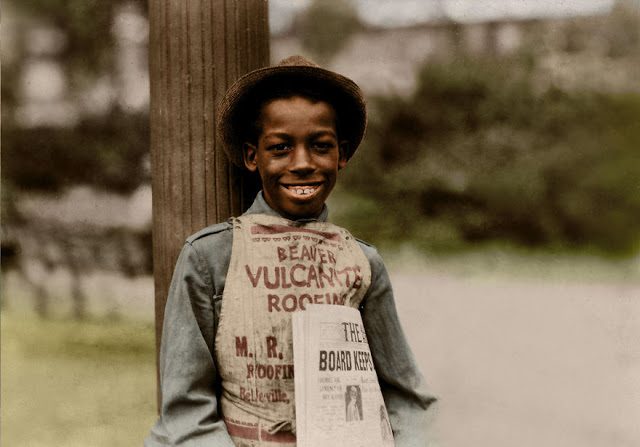
Roland, an 11-year-old newsboy from Newark, New Jersey.
Photo Credit: Tom Marshall/MediaDrumWorld
Marshall pointed out that “Hine’s work was not without risk. The immorality of child labor was hidden away from the wider public at the time, and his exposure of the underhand practices posed a threat to the industry. He was threatened with violence and death from factory foremen, and would resort to wearing disguises in order to gain access to the workshops.”

Raymond Klose (middle), newsboy, 13 years old, St. Louis, Missouri US, 1910. Photo Credit: Tom Marshall/MediaDrumWorld
For Marshall, reimagining the historical images has a deeper purpose. “I was inspired to colorize these photos following an article by my friend and fellow colorizer Sanna Dullaway,” he said. “As a photo colorizer, my aim is always to try and connect with the photo subjects on another level, something not always possible with a black and white photo. Hine’s photos are perfect for this purpose as they are already very engaging pieces.”

5-year-old Preston, a young cartooner in Eastport, Maine, 17th August 1911. Photo Credit: Tom Marshall/MediaDrumWorld
Marshall pointed out the key to the engagement: “The eyes of the children are often the first thing we notice, and his photos are so crisp and focused that I believe the addition of color really helps to bring them to life.”
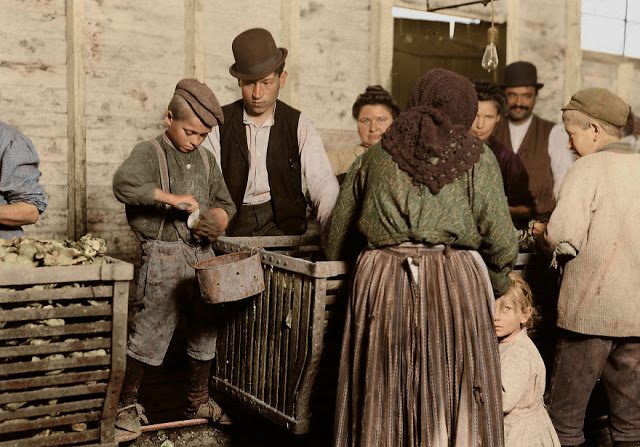
9-year-old Johnnie and the shucking-boss, in Dunbar, Louisiana, March 1911.
Photo Credit: Tom Marshall/MediaDrumWorld
“As always in the digital age it is easy to scroll past black and white photos without giving them a second glance, so I hope people will stop to look at these photos and learn more about the children pictured.”
Michael D. Carroll is a journalist and author with a particular interest in historical photography.

Philadelphia newsboy Michael McNelis, eight, Photo Credit: Tom Marshall/MediaDrumWorld
From his base in Birmingham, UK he directs bespoke press agency MediaDrumWorld and through his work at the agency, Michael came into contact with the thriving community of colorizors of historical images.
After placing several colorized history features into the national newspapers in the UK, he enlisted the support of this community to publish Retrographic, the first book to present a specially curated selection of iconic historical images in living color.
“The art of colorization truly brings some of history’s most dramatic and momentous events vividly to life,” he said.
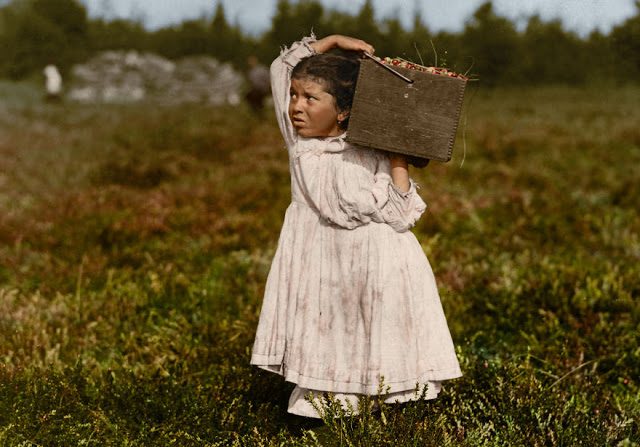
An 8 year old cranberry picker,Jennie Camillo .Photo Credit: Tom Marshall/MediaDrumWorld
“Rather than just looking more pleasing to the eye, or even being more accessible to people of the twenty-first century– colorized images are important in that they give us an insight into how these events would have appeared to the people who actually witnessed them.
“The process of colorization sounds simple–it is the application of color over the black and white image generally using Photoshop. However, it is the choice and application of colors which is where the painstaking work begins.
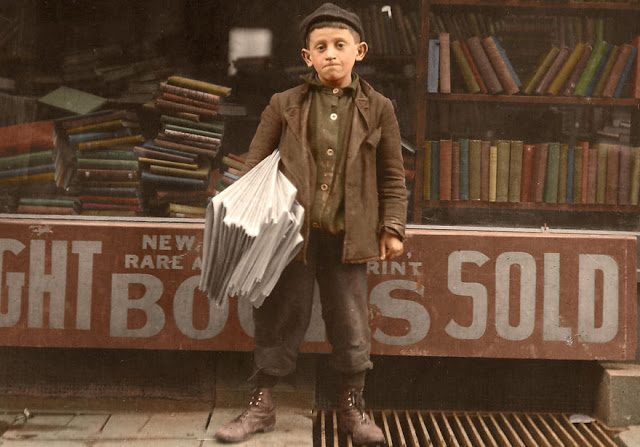
Newsboy Hyman Alpert (12) Photo Credit: Tom Marshall/MediaDrumWorld
“Colorisors must research the colors, using primary sources much like traditional historians. Only then will the correct colors be known.”
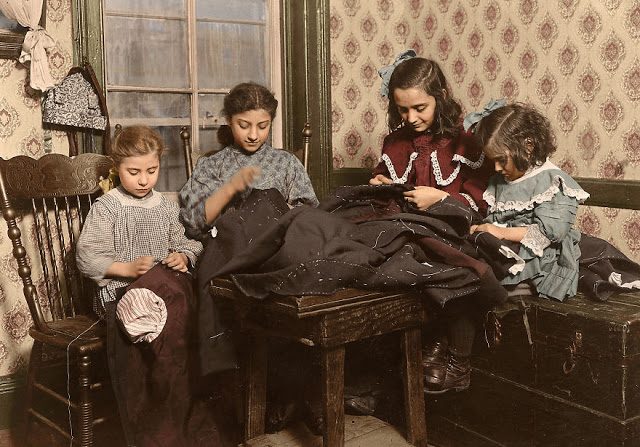
Garment workers Katrina De Cato (6), Franco Brezoo (11) Maria Attreo (12) and her sister Mattie Attreo (5) Photo Credit: Tom Marshall/MediaDrumWorld
With the support of ambassadors from the world’s first society for photographers, the Royal Photographic Society of Great Britain, images, and reviews on Retrographic have been featured in newspapers and online zines, including the Daily Mail, Telegraph, Times, Fstoppers, War History Online, and ePHOTOzine.
The book has recently been taken into the private collection of London’s prestigious Victoria and Albert Museum, in recognition of its contribution to the history of photography.
